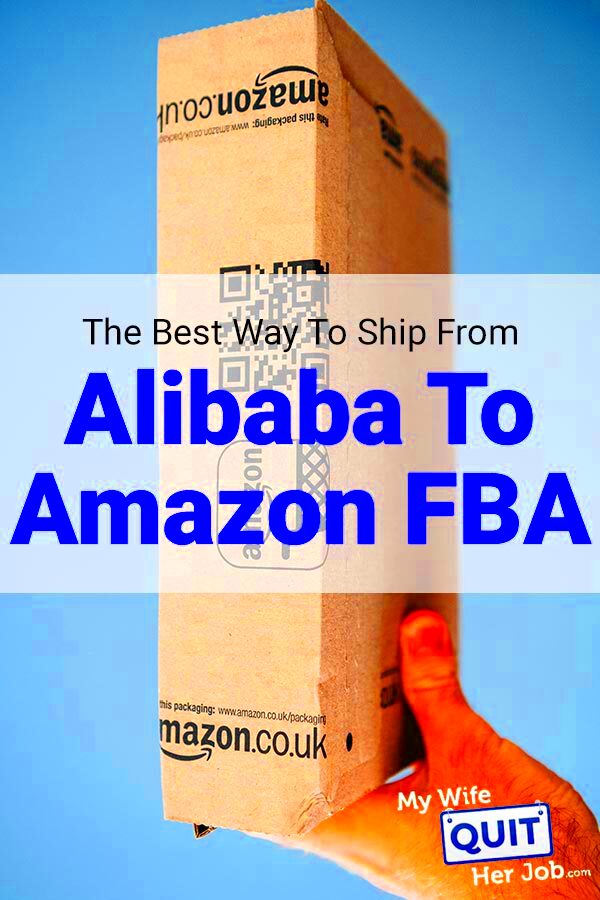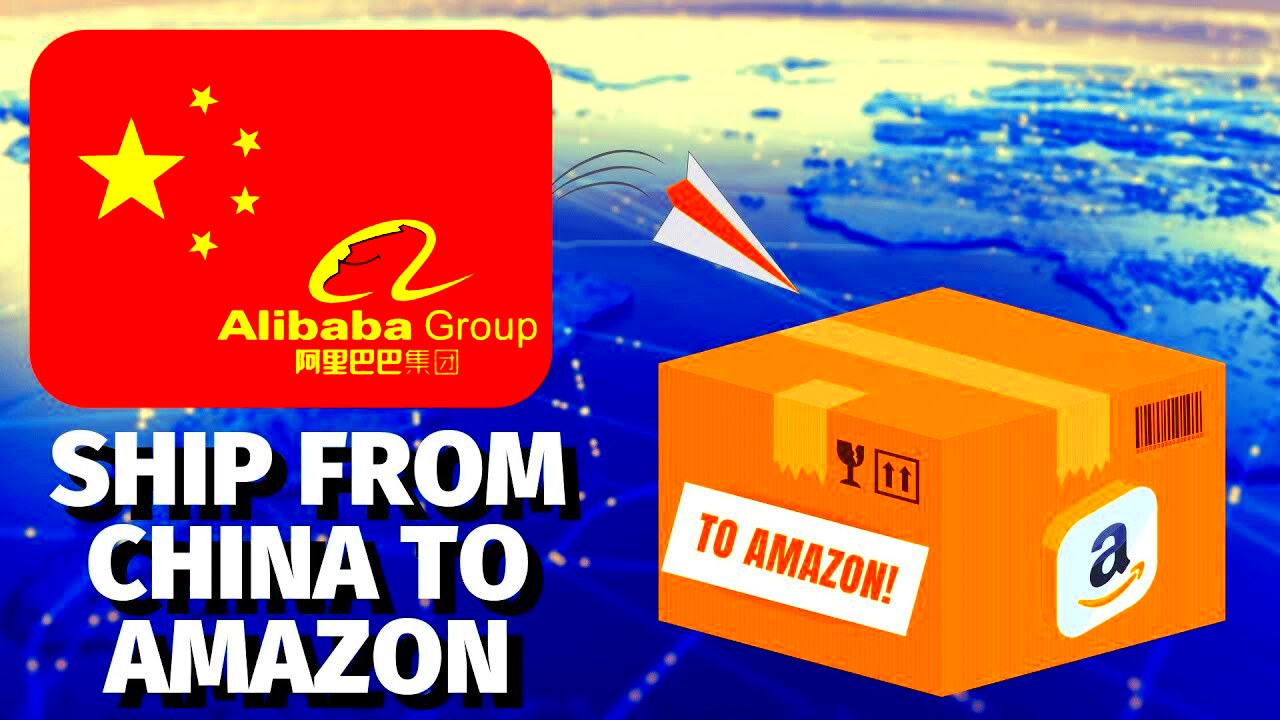Shipping products from
Alibaba to Amazon can seem overwhelming at first but with the right strategy it’s definitely doable. I recall my initial experience with this process; it was like trying to find my way through a maze without any directions. However once you familiarize yourself with the essentials things start to flow more easily. Here’s a straightforward overview of how the process works;To get started you should go ahead and place your order on
Alibaba. Once you’ve completed your purchase the next step is to organize the shipment. This includes selecting a shipping method and a freight forwarder. After your products are en route you’ll have to handle customs clearance and make sure that your items meet Amazon's standards before they can be added to your store.
Here’s a step-by-step guide to help you:
- Place your order on Alibaba and confirm the details with your supplier.
- Choose a shipping method that fits your budget and timeline.
- Engage a reliable freight forwarder to handle the logistics.
- Complete necessary customs paperwork.
- Track your shipment until it arrives at Amazon’s warehouse.
Breaking the process down into these steps will make it more manageable and help you carry out effectively.
Choosing the Right Shipping Method for Your Needs

Choosing the shipping option can greatly affect your expenses and how quickly your items arrive. Based on what I've seen it's all about finding a balance between affordability, efficiency and dependability. Here are some key points to keep in mind.
- Air Freight: This is faster but more expensive. It’s ideal for small, high-value shipments or when you need your products urgently.
- Sea Freight: More cost-effective for larger shipments but takes longer. This method is suitable for bulk orders where time isn’t as critical.
- Express Shipping: Offers the fastest delivery times but comes with a higher price tag. It’s useful for urgent or high-priority shipments.
When making a decision take into account the dimensions, weight and urgency of your product. There was a time when I had to choose between shipping methods for a bulk order of electronics. Going with sea freight ended up saving me quite a bit, even though it took a few weeks longer. By carefully considering these factors you can arrive at a well informed decision.
How to Prepare Your Products for Shipping

Getting your products ready for shipping is essential to prevent any hold ups or additional expenses. It may come across as a chore but believe me, it’s worth it. I recall the experience of preparing my shipment and realizing the significance of packaging and paperwork through a lesson.
Check out these suggestions to prepare your items for sale.
- Proper Packaging: Ensure your products are securely packed to withstand the journey. Use sturdy boxes and cushioning materials to prevent damage.
- Labeling: Clearly label each package with relevant information. This includes the product name, quantity, and destination address.
- Documentation: Prepare all necessary paperwork, including invoices, packing lists, and certificates of origin. These documents are essential for customs clearance.
- Compliance: Verify that your products meet Amazon’s requirements and standards. This includes labeling and packaging guidelines.
By following these steps you can make sure that your shipment gets to its destination safely and punctually. I’ve noticed that reviewing all the specifics before sending something off can prevent a lot of hassles down the line.
Finding Reliable Freight Forwarders

Selecting a reliable forwarder can significantly impact your shipping journey. I remember when I first started shipping I felt inundated by the multitude of choices and was unsure about how to select the right one. Through some experimentation I came across a few essential pointers for identifying a trustworthy forwarder.
Here’s what you should look for:
- Experience: Look for freight forwarders with experience in handling shipments between Alibaba and Amazon. Their familiarity with this route can be invaluable.
- Reputation: Check reviews and ask for recommendations. A forwarder with a solid track record and positive feedback from other clients is often a safe bet.
- Transparency: Ensure they provide clear details about their services, fees, and any potential extra costs. Avoid those who are vague or unwilling to share information.
- Customer Service: Good communication is crucial. Choose a forwarder who responds promptly to queries and provides support throughout the shipping process.
During my quest for a trustworthy partner I discovered that requesting references and engaging in conversations with their previous clients proved valuable in assessing their dependability. Investing effort into thorough research and making a choice can spare you from unnecessary stress in the future.
Managing Customs and Import Duties
Dealing with customs and import fees can be quite overwhelming, particularly if you're not familiar with shipping. I recall my initial shipment being delayed at customs due to my incorrect completion of the paperwork. It was certainly a valuable lesson, to say the least.
Here are a few suggestions for handling customs and import taxes efficiently.
- Understand the Requirements: Familiarize yourself with the customs regulations of the destination country. Each country has its own rules and duties that apply to imported goods.
- Accurate Documentation: Make sure all your paperwork is complete and accurate. This includes invoices, packing lists, and certificates of origin. Mistakes or omissions can lead to delays or additional charges.
- Calculate Duties: Research the import duties for your products. You can use online tools or consult with a customs broker to get an estimate of the fees.
- Customs Broker: Consider hiring a customs broker to handle the paperwork and ensure compliance with regulations. They can simplify the process and help avoid costly mistakes.
Dealing with customs doesn’t have to be a hassle if you keep things tidy and stay up to date. I’ve discovered that enlisting the help of a trustworthy customs broker can eliminate much of the uncertainty from the process.
Tracking Your Shipment
Staying updated on your delivery is essential to make sure it arrives at its location promptly. I know how stressful it can be to wait for a package without any idea of its whereabouts – it’s not a nice feeling. Fortunately tracking has become a lot more convenient thanks to advancements in technology these days.
Here’s a guide on how to keep tabs on your delivery efficiently.
- Tracking Number: Ensure you get a tracking number from your freight forwarder or shipping provider. This number is your key to monitoring your shipment’s progress.
- Shipping Provider’s System: Use the tracking tools provided by the shipping company. Most carriers offer online tracking systems where you can check the status and location of your shipment.
- Regular Updates: Set up alerts or notifications if available. This way, you’ll receive updates on significant milestones in your shipment’s journey.
- Contact the Forwarder: If you encounter any issues or discrepancies with the tracking information, don’t hesitate to contact your freight forwarder for assistance.
By closely monitoring your delivery you can foresee any possible problems and tackle them swiftly. In my experience being proactive and well informed streamlines the entire process and reduces stress levels.
Ensuring Your Products Meet Amazon’s Requirements
Preparing your products for Amazon goes beyond simply sending them over from
Alibaba. I still recall the time my initial shipment reached Amazons warehouse only to be turned away for not meeting their strict standards. That was definitely a valuable lesson! To steer clear of such hassles heres what you should do to make sure your products are all set for Amazon.
- Labeling: Each product must have clear, Amazon-compliant labels. This includes barcodes, FNSKU labels, and any other required product identifiers. Make sure these are placed correctly and legibly on your packaging.
- Packaging: Follow Amazon’s packaging guidelines meticulously. Products should be packaged securely to prevent damage and should be free from any external packaging issues. Amazon has specific requirements for the dimensions and materials used.
- Documentation: Include all necessary documentation with your shipment, such as packing lists and invoices. This paperwork should match the details of what’s listed in your Amazon inventory.
- Product Condition: Ensure that all products are in new condition and meet Amazon’s quality standards. Any damaged or defective products will lead to returns or negative reviews.
If you stick to Amazons rules you can make things easier for yourself and steer clear of any hassles. I had to go through some challenges to figure this out, but now I always make it a point to review these guidelines to ensure everything goes smoothly.
Cost-Saving Tips for Shipping from Alibaba to Amazon
Shipping doesn’t need to be expensive. Throughout the years I’ve learned some strategies to reduce costs while maintaining quality. Here are a mix of helpful suggestions and anecdotes from my own experiences to assist you in saving money.
- Consolidate Shipments: Combine multiple orders into one shipment to save on shipping costs. This is especially useful for smaller orders. I once consolidated several small orders and saved a significant amount on shipping.
- Negotiate Rates: Don’t hesitate to negotiate shipping rates with your freight forwarder. Building a good relationship with them can often lead to better deals and discounts.
- Choose Economical Shipping Methods: Opt for sea freight if time is not a critical factor. It’s much cheaper than air freight and is suitable for larger shipments.
- Plan Shipments Wisely: Avoid shipping during peak seasons or holidays when rates are higher. Planning your shipments during off-peak times can lead to better rates.
- Use a Shipping Calculator: Utilize online shipping calculators to compare costs across different carriers and methods. This can help you find the most cost-effective option for your needs.
By putting these suggestions into action, I have been able to lower my shipping costs considerably. With some careful thought you can control your expenses and stay within your budget.
FAQ
Q: How do I choose the right shipping method for my products?
The choice between air freight and sea freight depends on the size, weight and urgency of your shipment. Air freight is quicker but comes with a higher cost whereas sea freight is more budget friendly but takes longer. If you have smaller orders that need to be delivered quickly air freight is the better option. On the hand for larger shipments that aren't time sensitive sea freight is more cost effective.
Q: What should I do if my shipment gets delayed?
A: Take a look at the tracking details shared by your freight forwarder or shipping firm. If you notice any major hold ups reach out to your forwarder for an update and to sort out any concerns. Being proactive can aid in resolving delays in a smoother manner.
Q: How can I ensure my products comply with Amazon’s requirements?
Before sending out your shipment it’s important to thoroughly go through Amazon’s packaging and labeling guidelines. Make sure that every product is labeled correctly packed according to Amazon’s standards and includes all the required paperwork. Keep an eye on Amazon’s rules since they may change their policies from time to time.
Q: Are there any hidden costs I should be aware of when shipping?
Certainly there might be extra expenses like customs duties, taxes and handling charges. Its important to look into these costs in advance and include them in your budget. Getting advice from a customs broker can assist you in managing these costs more efficiently.
Conclusion
Transporting goods from
Alibaba to Amazon doesn't have to be a daunting task. With the information and some preparation it can turn into a seamless procedure. Having navigated through the challenges of shipping I can assure you that the rewards are definitely worth it. By grasping the shipping process selecting methods adequately prepping your products and keeping yourself updated on customs and tracking you'll pave the way for a smooth and successful journey.Keep in mind that progress comes in increments. Whether you’re dealing with the intricacies of customs or exploring ways to cut down on shipping expenses every choice you make plays a role in the larger scheme of things. Don hesitate to reach out for assistance or seek guidance when necessary. With the strategy and a touch of patience your transition from
Alibaba to Amazon will be smoother. Cheers to seamless deliveries and thriving sales!
 Choosing the shipping option can greatly affect your expenses and how quickly your items arrive. Based on what I've seen it's all about finding a balance between affordability, efficiency and dependability. Here are some key points to keep in mind.
Choosing the shipping option can greatly affect your expenses and how quickly your items arrive. Based on what I've seen it's all about finding a balance between affordability, efficiency and dependability. Here are some key points to keep in mind. Getting your products ready for shipping is essential to prevent any hold ups or additional expenses. It may come across as a chore but believe me, it’s worth it. I recall the experience of preparing my shipment and realizing the significance of packaging and paperwork through a lesson.
Getting your products ready for shipping is essential to prevent any hold ups or additional expenses. It may come across as a chore but believe me, it’s worth it. I recall the experience of preparing my shipment and realizing the significance of packaging and paperwork through a lesson. Selecting a reliable forwarder can significantly impact your shipping journey. I remember when I first started shipping I felt inundated by the multitude of choices and was unsure about how to select the right one. Through some experimentation I came across a few essential pointers for identifying a trustworthy forwarder.
Selecting a reliable forwarder can significantly impact your shipping journey. I remember when I first started shipping I felt inundated by the multitude of choices and was unsure about how to select the right one. Through some experimentation I came across a few essential pointers for identifying a trustworthy forwarder.
 admin
admin








